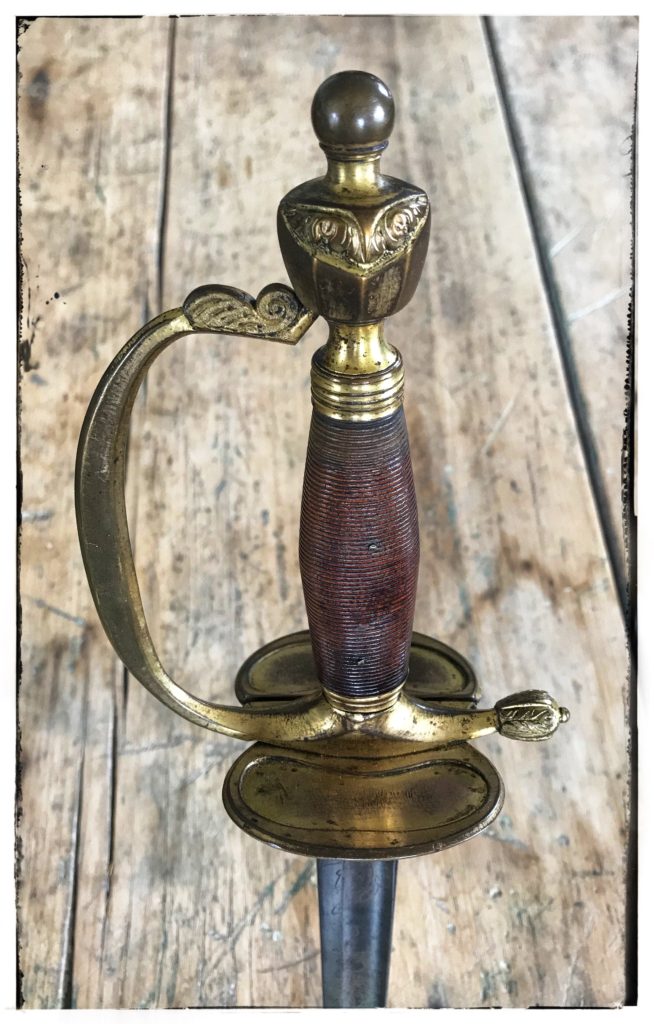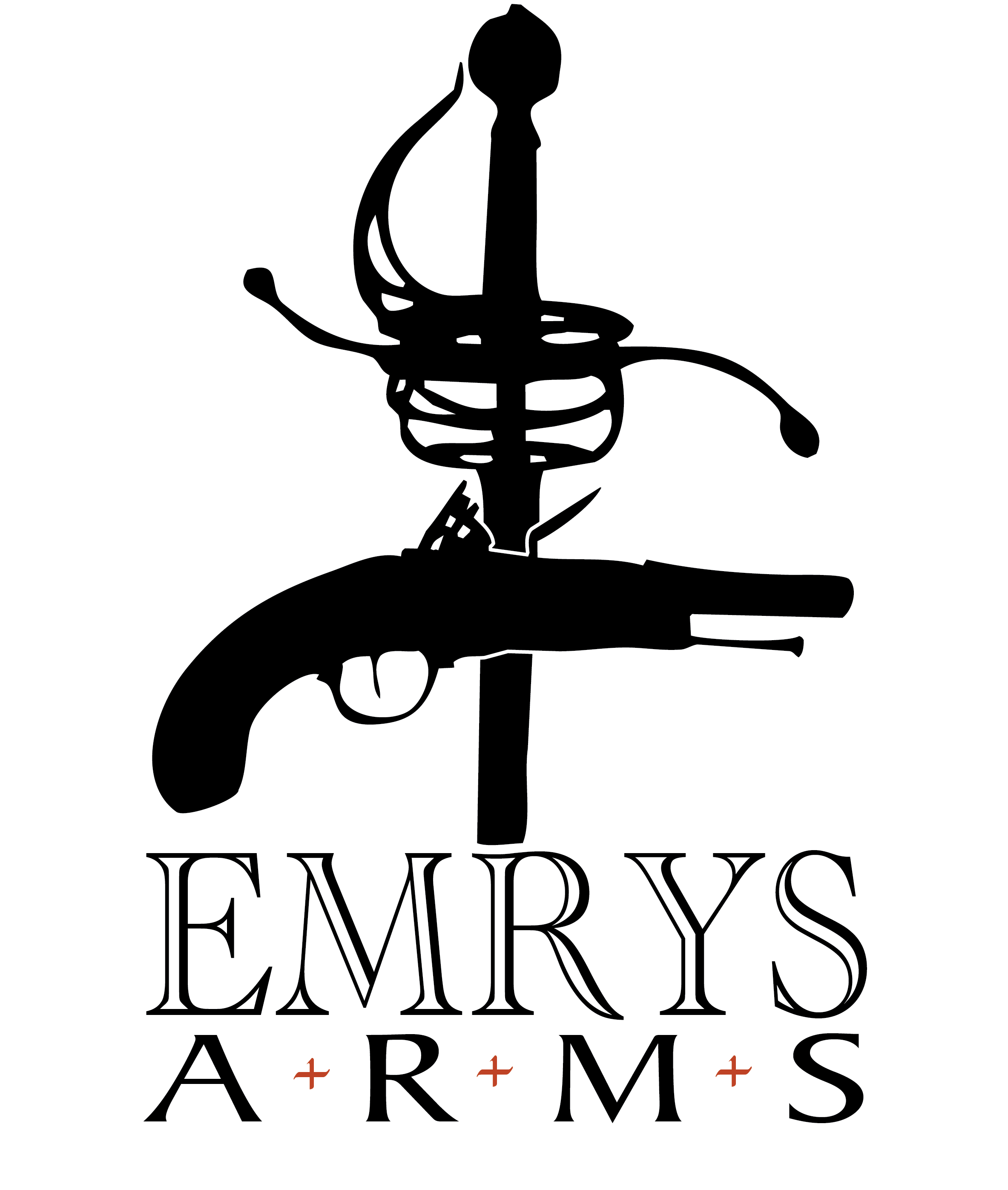| Collection #: | 2020.003 |
|---|---|
| Type: | Infantry Officer |
| Nationality: | British |
| Pattern: | 1796 |
| Date: | 1796 - 1822 |
| Hilt: | Gilt Brass |
| Blade Length: | 82cm (32 1/4") |
| Blade Width: | 2.8cm (1 1/8") |
| Overall Length: | 99cm (39") |
| Maker: | No Maker's Markings - many others |

A good example of a British 1796 pattern infantry officer’s sword out of Nova Scotia. The hilt is in sturdy condition with much of its gilt remaining. The silver wire wrap has long since disappeared and you can see the ridges in the wood core of the handle where the wire would have comfortably been held in place. The folding inner guard is fully functional via a long hinge which still holds the guard securely in the up or down position. The underside of the inner folding guard is crudely inscribed in an old font. The letters are either “VOL” or if held the other way “TCA” (?). It is hard to make out the letters precisely and more difficult yet to know if it is authentic to the period.
The regulation length blade is darkened with age making it somewhat difficult to see the engraving. However, much of the gold inlay is still present in the engraving and with some photo tweaking, you can make out a little better the images present. The forte of the blade on either side has floral designs. Continuing up the right side of the blade are further floral designs, then a shield/canon/crossed spear trophy of arms followed by acorns and leaves. The left side after the initial floral decorations consists of a scroll inscribed with the word “Warranted” followed by the royal coat of arms which date it between 1801 – 1816 concluding with further floral decoration.
There are no makers marks to the blade, however the inscription “Warranted” perhaps gives us some clues. Thomas Gill II “appears to be the first manufacturer to have put “Warranted” on his blades, probably as a sales strategy supposedly guaranteeing their quality. Over time, the inscriptions varied and include ‘Warranted Never to Fail’, ‘Warranted to Cut Steel’ and ‘Warranted to Cut Iron’.” ~ Richard Dellar, The British Cavalry Sword 1788 – 1912, page 291. However, other makers such as Henry Osborn were also known to use the term ‘Warranted’, so while this is a possibility, it is inconclusive.
We use cookies to improve your experience on our site. By using our site, you consent to cookies. Enjoy the cookies...they're delicious...
Websites store cookies to enhance functionality and personalise your experience. You can manage your preferences, but blocking some cookies may impact site performance and services.
Essential cookies enable basic functions and are necessary for the proper function of the website.
Statistics cookies collect information anonymously. This information helps us understand how visitors use our website.
Google Analytics is a powerful tool that tracks and analyzes website traffic for informed marketing decisions.
Service URL: policies.google.com (opens in a new window)

